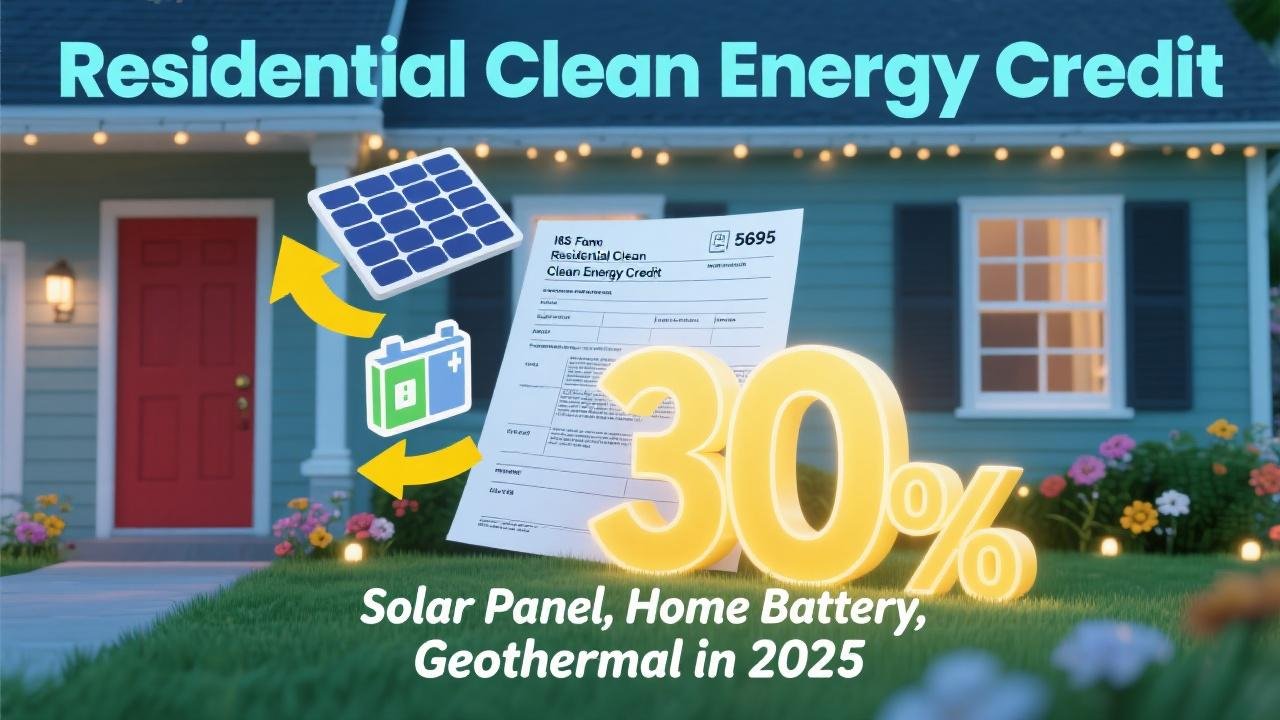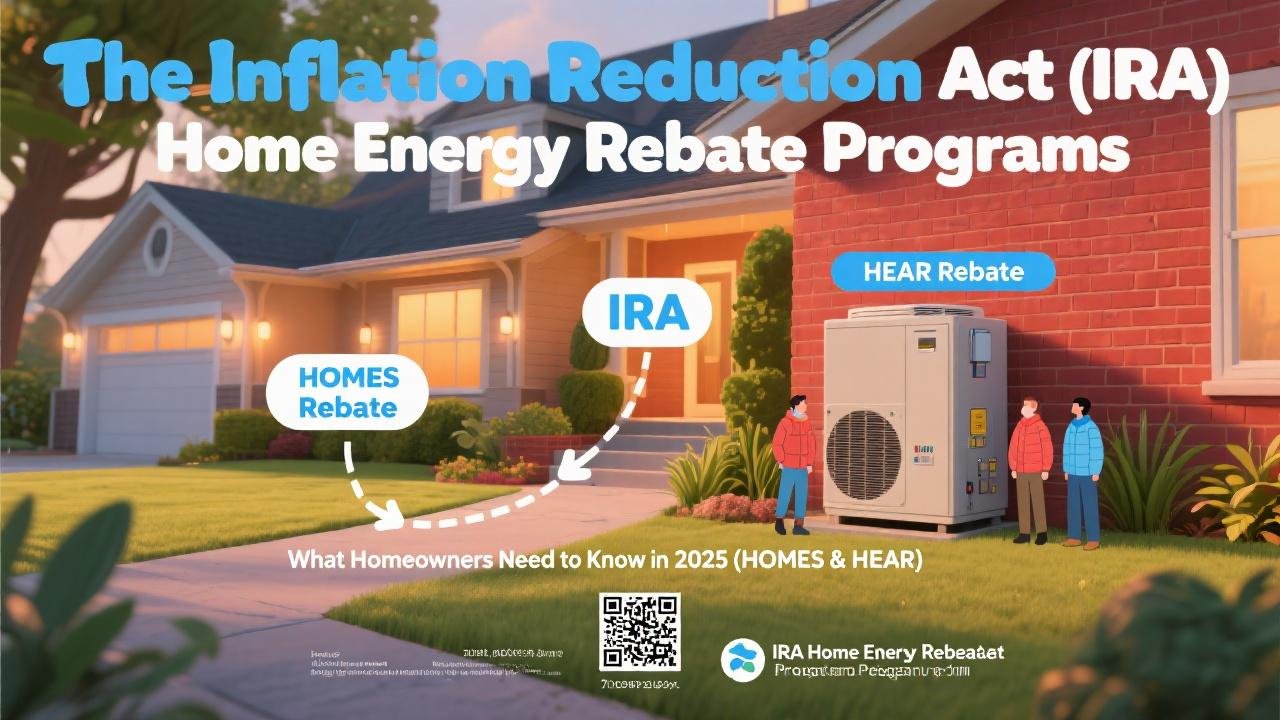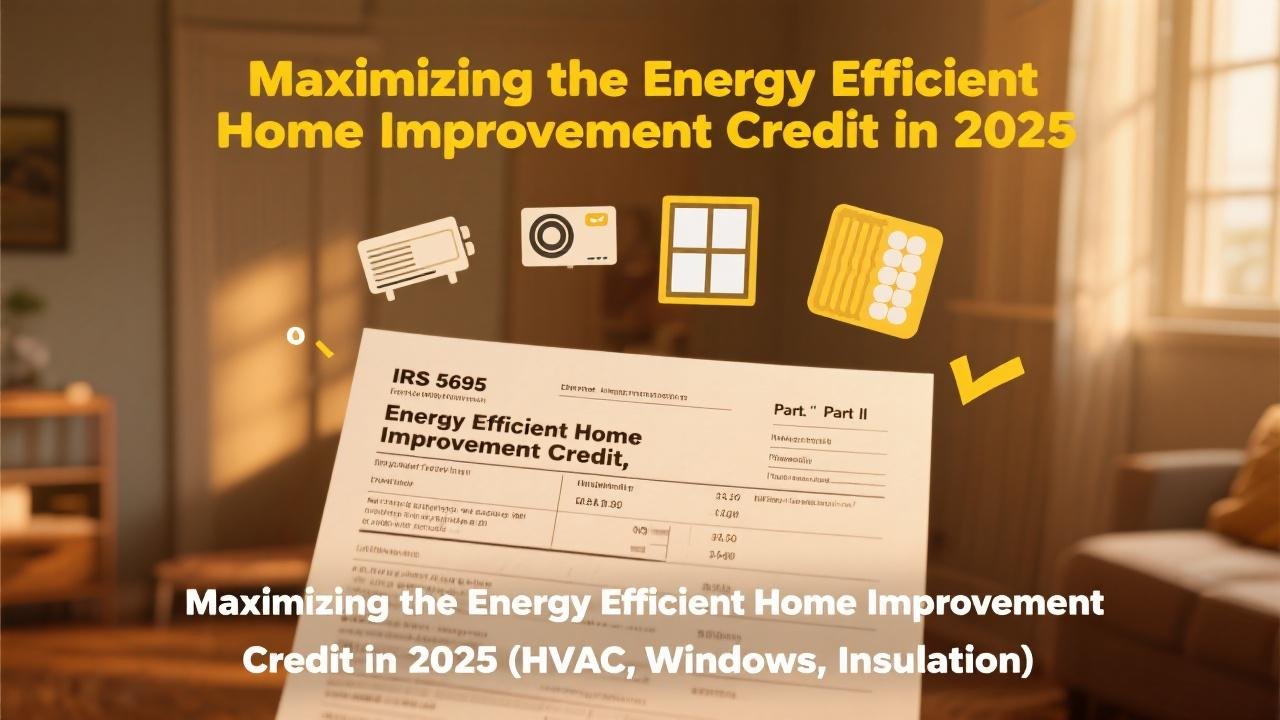Powering Your Renewable Energy Investment with Federal Support
Investing in renewable energy for your home – such as solar panels, battery storage, or a geothermal heat pump system – is a significant step towards energy independence, lower utility bills, and a reduced environmental impact. In 2025, the U.S. Federal Government continues to offer a powerful incentive to make these clean energy upgrades more affordable: the Residential Clean Energy Credit. This tax credit, often referred to as the “solar tax credit,” can substantially reduce the net cost of your renewable energy project. This guide provides a detailed look at this specific credit, what technologies qualify, how much you can save, and how to claim it for systems installed in 2025.
What is the Residential Clean Energy Credit?
The Residential Clean Energy Credit allows homeowners to claim a credit against their federal income taxes for a percentage of the cost of new, qualified clean energy property installed at their U.S. residence. This credit was significantly enhanced and extended by the Inflation Reduction Act of 2022.
- Credit Amount: For property placed in service between January 1, 2022, and December 31, 2032, the credit is 30% of the total qualified expenditures.
- Phase-Down: The credit percentage is scheduled to decrease to 26% for property placed in service in 2033 and 22% for property placed in service in 2034, unless Congress makes further changes.
- No Maximum Limit (for most technologies): For solar electric, solar water heating, wind energy, geothermal heat pumps, and battery storage, there is no dollar cap on the 30% credit. This means if your eligible system costs $30,000, your tax credit would be $9,000.
- Fuel Cell Exception: The credit for qualified fuel cell property is limited to $500 for each half kilowatt (0.5 kW) of capacity.
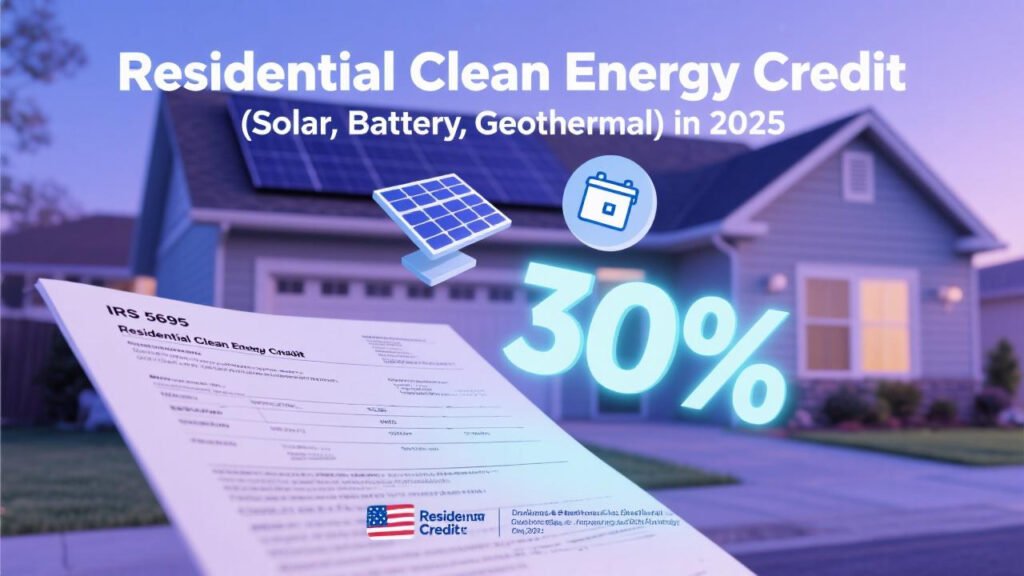
Eligible Clean Energy Technologies for 2025 Installations:
The following new (not used) clean energy properties qualify for the 30% credit :
- Solar Electric Panels (Photovoltaics – PV):
- These are systems that convert sunlight directly into electricity for your home. This is the most common technology associated with this credit.
- Solar Water Heaters:
- Systems that use solar energy to heat water for your home.
- Requirement: Must be certified by the Solar Rating Certification Corporation (SRCC) or a comparable entity endorsed by your state. At least half the energy used to heat water must come from the sun.
- Geothermal Heat Pumps:
- These systems use the stable temperature of the earth to provide highly efficient heating, cooling, and often hot water.
- Requirement: Must meet ENERGY STAR requirements in effect at the time of purchase.
- Battery Storage Technology (Installed in 2023 or later):
- Home batteries used to store energy (often from solar panels) for later use, backup power, or to optimize energy costs.
- Requirement: Must have a capacity of at least 3 kilowatt-hours (kWh). This credit can be claimed even if the battery is added to an existing solar PV system or installed as a standalone storage system (though it’s often paired with solar for maximum benefit and to ensure it’s charged by clean energy).
- Small Wind Turbines:
- Residential wind turbines that generate electricity.
- Fuel Cells:
- Systems that convert chemical energy from a fuel (like natural gas or hydrogen) into electricity through an electrochemical process. Subject to the per-0.5 kW capacity limit mentioned above.
What Costs Are Included in the Credit Calculation?
The 30% credit applies to the total cost of the qualified clean energy property, which generally includes :
* The cost of the equipment itself (solar panels, inverters, batteries, geothermal heat pump components, etc.).
* Labor costs for on-site preparation, assembly, or original installation of the property.
* Piping or wiring to connect the system to your home.
* Sales tax paid on these eligible expenses.
* Permitting fees and inspection costs directly related to the installation.
Important Note on Rebates: If you receive a rebate from your utility company that is considered a purchase-price adjustment (meaning it’s directly tied to reducing the cost of the system from the seller/installer), that rebate amount must generally be subtracted from your total system cost before calculating the 30% tax credit. However, state tax credits typically do not reduce the federal tax credit amount.
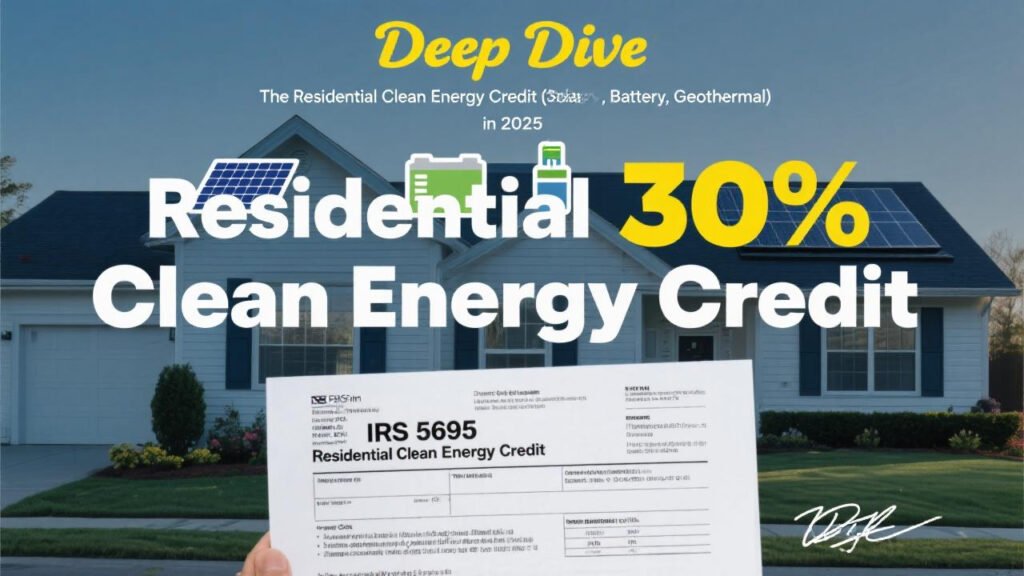
Who Qualifies for the Residential Clean Energy Credit?
- Homeowners: You can claim the credit for improvements made to your U.S. residence, whether it’s your primary home or a secondary home (except for fuel cells, which are limited to primary residences).
- Renters (in some cases): If you are a renter and pay for the installation of qualified clean energy property in your rented home, you may be eligible.
- Ownership is Key: You must own the system. If you lease a solar panel system or have a Power Purchase Agreement (PPA) where a third party owns the system, you cannot claim this credit; the system owner typically claims it.
- No Income Limit: There is no income cap to qualify for this credit.
- Nonrefundable Credit with Carryforward: The credit is nonrefundable, meaning it can reduce your tax liability to $0, but you won’t get any excess back as a cash refund. However, if the credit you’re eligible for is more than your tax liability in a given year, you can carry the unused portion forward to reduce your taxes in future years.
How to Claim the Residential Clean Energy Credit in 2025:
- Ensure Eligibility: Confirm that your chosen technology and installation meet all IRS requirements.
- Gather Documentation: Keep meticulous records of all expenses, including:
- Invoices and receipts for equipment and installation.
- Manufacturer certifications (e.g., SRCC certification for solar water heaters, ENERGY STAR certification for geothermal heat pumps).
- Proof of installation date.
- File IRS Form 5695: Complete Part I of IRS Form 5695, “Residential Energy Credits,” and attach it to your annual federal income tax return (Form 1040 or 1040-SR).
- Claim in Year of Installation: You must claim the credit for the tax year in which the installation of the property is completed, not necessarily when it was purchased.
A Significant Boost for Your Clean Energy Goals
The Residential Clean Energy Credit offers a powerful financial incentive for homeowners in 2025 to invest in renewable energy technologies like solar panels, battery storage, and geothermal heat pumps. The 30% uncapped credit (for most technologies) can make these systems significantly more affordable, shortening payback periods and enhancing their overall value. By understanding the eligible technologies, qualifying costs, and claim process, you can confidently leverage this federal support to power your home with clean, sustainable energy. Always consult the latest IRS guidelines and consider speaking with a tax professional for personalized advice.

